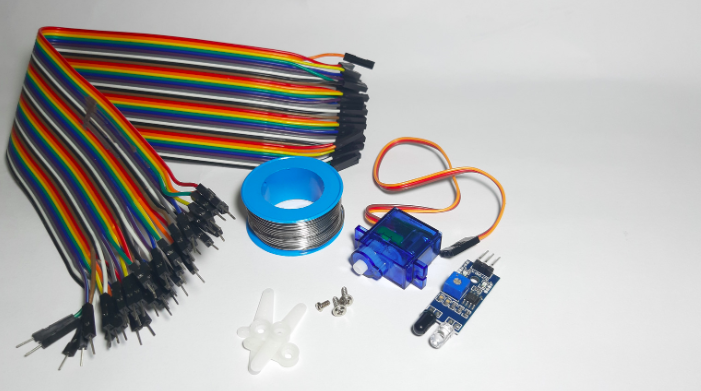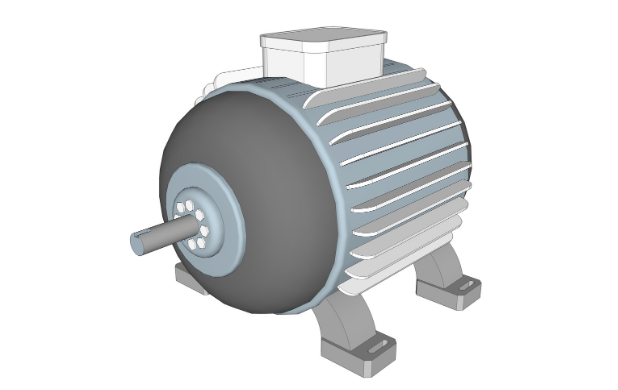Last Updated on November 25, 2022 by mdmtool
There are two main types of electric motors: servo motors and induction motors. The critical difference between a servo motor and an induction motor is that a servo motor can be accurately controlled at very high speeds. In contrast, an induction motor usually only operates at lower speeds.
What Is A Servo Motor?

A servo motor is an electric motor used to control and move mechanical parts or devices. Servo motors are often used in robotics and can be programmed to rotate or move in specific patterns. Servo motors are used in applications requiring precise control, such as robotics, CNC machines, and 3D printers. They typically have a higher power density than induction motors and can be more expensive.
What Is Induction Motor?

An induction motor is an AC electric motor in which the electric current in the rotor needed to produce torque is obtained by electromagnetic induction from the magnetic field of the stator winding. The rotor can be either wound type or squirrel-cage type.
Induction motors are the most common type of electric motor used in many applications, such as pumps, compressors, fans, and conveyors. They are typically cheaper than servo motors but have lower power density and are not as precise.
Difference Between Servo Motor And Induction Motor?

Servo motors and induction motors are both electric motors that serve different purposes.
- Controller: The main difference between a servo motor and an induction motor is that it can be controlled with an external controller to rotate the shaft at a specific angle. In contrast, the induction motor cannot be controlled and only turns when the current flows through its windings.
- Use: Servo motors are used in applications where precise control of shaft rotation is necessary, such as in robotics, CNC machines, and hard disk drives. In contrast, induction motors are used in applications requiring precise control, such as fans, pumps, and compressors.
- Cost: Servo motors are typically more expensive than induction motors due to their more complex construction. Induction motors are simpler in design and therefore tend to be cheaper.
- Speed: A servo motor can rotate much faster than an induction motor.
- Torque: A servo motor can produce more torque at lower speeds than an induction motor.
- Efficiency: Servo motors are typically more efficient than induction motors.
- Control: Servo motors can be more precise than induction motors.
- Performance: In general, servo motors outperform induction motors in most applications.

Servo Or Induction Motor: Which Is Suitable For Your Application?
A few key considerations will help you decide if a servo motor or induction motor is suitable for your application.
- Environment: One important thing to consider is the environment in which the engine will be used. Servo motors are well-suited for applications where space is limited, such as in an industrial robot arm. They are also ideal for applications that require high precision, such as in a CNC machine. On the other hand, induction motors are more rugged and can be used in a broader range of environments, including outdoor or harsh environments.
- Speed and torque: Another important consideration is the speed and torque requirements of your application. Servo motors can provide high torque at low speeds, making them ideal for low-speed operation applications, such as in a conveyor belt system. On the other hand, induction motors are more efficient at higher speeds and are better suited for applications where high speed is required, such as in a fan or pump.
- Cost and installation: It would help if you also considered the cost of the motor and the installation. Servo motors are generally more expensive than induction motors. However, they are often less costly to install because they require less cabling and support equipment. On the other hand, induction motors are typically less expensive to purchase but can be more costly to install.
Servo Motor Advantages
- Servo motors are more precise than induction motors because they rotate at specific speeds.
- Servo motors use feedback control, which allows them to adjust their speed based on demand.
- Servo motors are also more efficient than induction motors, which means they use less energy to run.
- Servo motors only consume electricity when they are actively used, whereas induction motors continue to draw power even when not used.
Servo Motor Disadvantages
- They require more expensive feedback devices to function accurately
- They are generally less rugged and have shorter lifespan than induction motors
- They are typically more expensive than induction motors
- They require more maintenance than induction motors
- They are not as efficient as induction motors at converting electrical energy into mechanical energy
- They are not as widely used as induction motors, so there is less of a selection to choose from when shopping for one
- They are not well suited for applications that require high starting torque, such as some industrial applications.
Advantages Of Induction Motor
- Induction motors are rugged and have simple construction, which makes them less expensive than servo motors.
- They are also reasonably easy to maintain and repair.
- Induction motors are also more efficient than servo motors, making them ideal for applications where energy efficiency is a priority.
- Induction motors are more tolerant of variations in load than servo motors, meaning they can better handle sudden changes in demand.
Disadvantages Of Induction Motors
While induction motors have many advantages, there are some disadvantages to consider as well.
- One major downside is that induction motors typically have poorer speed control than servo motors.
- Induction motors generate more heat than servo motors, which can shorten their lifespan.
- Induction motors generally have a lower power density than servo motors, meaning they are not as compact.
FAQs
What are the wires of servo motor?
A servo motor typically consists of three wires: power, ground, and control. The power wire is usually red, the ground wire is black or brown, and the control wire is yellow, orange, or white and rotates in either direction.
Conclusion
When choosing an electric motor for a particular application, it is essential to consider the required speed, power, and precision. Servo motors are generally more expensive than induction motors but offer advantages in terms of speed and precision. Induction motors are more common and typically cheaper but may not be suitable for high-speed or precision applications.





